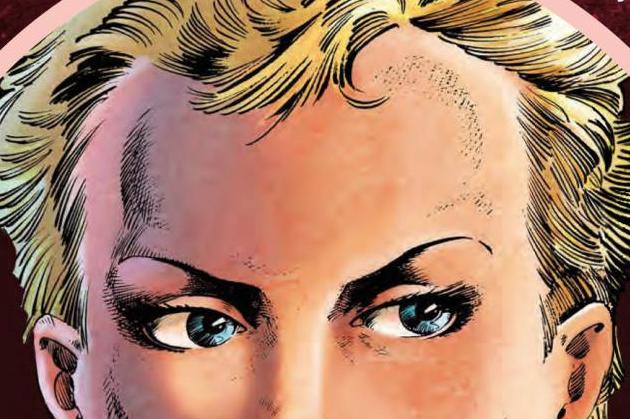THE BALLAD OF HALO JONES, BOOK THREE REVIEW
Artist: Ian Gibson
Colourist: Barbara Nosenzo
Letterer: Richard Starkings
Publisher: Rebellion
Picture the scene. The summer of 1984, Britain. The nation’s media obsesses over the birth of a Princesses’s child. There have been violent clashes between striking coal miners and the police, as government policy devastates mining communities. Unemployment is at a record high. There are four television channels. Everything is closed on a Sunday.
2000AD is a comic published by the giant IPC, with a carefully cultivated punk ethos. 2000AD is aimed at young boys. It takes the classic style of British boy’s comics, of war tales or sporting stories, but with a science fiction edge that has become popular since Star Wars. It’s the sort of comic you use your pocket money to buy from the newsagent and share with friends. It’s violent – heroes karate-chop off heads, and giant sharks bite people in half – and it’s littered with exclamations which are dangerously close to sounding like swear words. Its heroes are often muscle bound thugs. But it’s clever too, satirising the rich and powerful. Parents don’t like it.
Flicking through these newsprint pages, there something new...something different. Alongside the future cops, and the stories of alien warfare, there’s a story about a girl going shopping, and falling out with her friends, and trying to get a job.
The Ballad of Halo Jones shouldn’t work. But it does. In this comic full of muscular guys with guns, Halo Jones is revolutionary. More than thirty years later, it’s regarded as one of the best stories 2000AD ever published. Fans still regard it with a certain level of awe. It’s the story of an ordinary woman who escapes the world, and carves her own path through the universe. A feminist icon in a comic sold to twelve year old boys. A story that is touching and emotional, appearing in a comic anthology whose star is a violent fascist. It’s characters are familiar, but strange and other-worldy. In an industry which still has problems with women who aren’t in lyrca, it’s a passionate and inspirational story about an ordinary woman, with her strengths and flaws, who does incredible things. It’s surprising, and touching, and considered. Life-long fans want to push into the hands of strangers, whispering “Read this. It’s beautiful”.
This is book three, so you won’t start here. If you want to know about Halo Jones, you need to start of the beginning. You’ll find out about a young women who lives in a dangerous future and is just as bored as you would be on one of the Sundays when everything was closed. About how she suffers loss, and in her grief determines to make something of her life. About how she boards a space ship called the Clara Pandy, taking its final cruise to the edge of the galaxy. About the adventures she has along the way: Battles with terrorists; meeting billionaires and talking dolphins. About how she reaches the end of her journey and finds herself alone, trapped at the end of the world, with nothing to do but get drunk.
Which brings us to Book 3. This is the point at which the Ballad verves closest to the 2000AD standard, as Halo finds herself joining the army and fighting an alien war. But this isn’t a story of wartime heroics. It’s a story of the desperation of battle, and the loss of friends. The army becomes just another place Halo can’t escape. Book three is about starting again, and making new friends, and rebuilding yourself from scratch, and then losing everything all over again.
Halo finds herself fighting in a war which has been suggested in the previous two books, but which always seemed far away. It was just another detail of this carefully constructed world, but now the war is inescapable. Despite the huge sweep of story, there are small details which guide the tone throughout, and whole cast of characters are realised. Minor details, such as a friend’s obsession with a radio serial, or Halo's shock that anyone might not be vegan, create a fully realised world. Minor details from the first two books are expanded into major plot points, without ever feeling forced.
Ian Gibson’s artwork is beautiful throughout. Time and again, Halo’s eyes stare longingly from the page, full of life and regret, forging a direct relationship with the reader. Gibson’s awkward humans and their gangly limbs are hidden within chunky armour and uniforms, all detailed and wonderfully designed. His alien worlds, originally printed in black and white, are here gifted colours by Barbara Nosenzo. This new coat of paint revitalises the pages, adding even more depth.
Halo Jones emerged from a world of grey uncertainty, where violence is a constant threat. A place where a dumbed-down media dominates, and where racial tension brings society constantly to a knife edge. From here, Halo Jones took her first steps into the universe, choosing to abandon the world’s expectations for her. Three Books later and the final, quiet, heartbreaking and uplifting panels show how far Halo has come. How she has been changed. How far she has to go.
Read this. It's beautiful.





